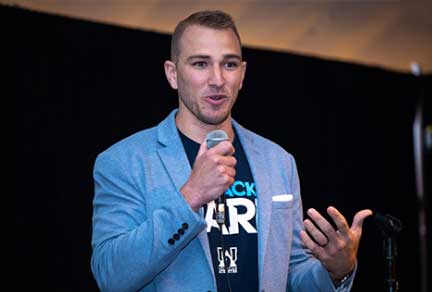Making cell and gene therapy more accessible in the treatment of solid tumors
As cell and gene therapies (CAGTs) evolve, some are more established, and others are at the cutting edge. The question arises about how to make these therapies more accessible to patients. 1The paradigm of harnessing the immune system to fight cancer is now well-established in hematology, as exemplified by the six FDA-approved CAR-T cell products. All of the currently available CAR-T products are manufactured using gene therapy to modify autologous T-cells from a patient so that they express a chimeric antigen receptor. This targets an antigen (CD19 or BCMA) expressed on malignant cells.
The capabilities and experience of hematology centers in treating cancers with CAGTs and managing side-effect monitoring are second to none. A key challenge today is broadening the application of these therapies to solid tumors, which are far more prevalent. As a matter of health equity, every patient deserves access to cancer care. But today, CAR-T treatment is available almost exclusively at accredited hospitals and academic centers; many are far distant from the homes of most patients, adding cost and inconvenience to their burden.
Further, underserved populations are likely to lack affordable access to these sites, undermining efforts to expand inclusion in clinical trials. Treating large numbers of patients suffering from solid tumors – and bringing down the cost – will doubtless require extending availability beyond traditional settings, perhaps to community-based sites. But is this viable, given the complexity of treatment processes?
If we look at the recent success of providing the broad population with mRNA-based vaccines in sites ranging from pharmacies to local senior centers, the answer might well be yes. One can argue that these studies for CAR-T and other CAGTs belong in academic and large healthcare settings. However, given patient needs and the evolution of patient-centric healthcare, we believe that conducting research into CAGTs for solid tumors will gradually expand to encompass community-based treatment.
A journey that has already begun
Barriers are already being broken with studies conducted outside the confined areas of academic hematology settings. A few community-based sites have already successfully achieved all aspects of the protocol to protect subject safety, with intensive monitoring and adverse event management similar to that of a large academic center. Parexel is actively working on a study with a CAR-T sponsor that prefers community-based sites. Unlike rare diseases, oncology is one of those therapeutic areas where a patient can feasibly receive treatment at a community center based on standard of care. However, a wide range of contingencies must be considered in moving forward in this direction.
Regulatory considerations
From a regulatory standpoint, agency decision-makers might be naturally predisposed to traditional settings. But stakeholders are well aware that hospitals and academic centers are experiencing capacity constraints and will eventually be unable to meet the demand.
The FDA uses a risk-based approach, evaluating the characteristics of a product relating to safety. Ultimately, it is incumbent on the sponsor and the site to ensure that the trial can be conducted as designed according to the investigational new drug (IND) application. Community sites must bolster their capabilities to cover all aspects of the protocol with monitoring as a key element, perhaps even having doctors on call.
Challenges and opportunities
Of course, only some sites can offer allogeneic or autologous CAR-T, as the cell therapy component is challenging relative to monitoring and auditing. There are issues, for example, with PD1 checkpoint inhibitors that result in side effects. One of the most serious is cytokine release syndrome (CRS), which can cause severe drops in blood pressure and high fever. That said, CRS can be effectively treated, and newer generations of CAR-T cells have been designed to improve efficacy and reduce toxicity.2 And the field is wide open for in vivo products, which will become more prevalent. Not all products require highly specialized capabilities. Injecting the patient with CAR-T cells in vivo will eventually be much more cost-effective without needing production, storage, and transportation facilities.
Advantages for community and regional sites
As for clinicians and site teams at community sites and regional centers, we have found that it is a fallacy to assume that they are not interested in CAR-T, oncolytic viruses, gene therapies, and the like. If they are performing transfusions or PD1 checkpoint inhibitors, for example, they already have the capabilities to treat patients with many of the more established cell and gene therapies.
Moreover, it can be in the best interests of community sites to develop these capabilities, not only from a revenue-generating standpoint but also for staff retention. Professionals will naturally seek opportunities to be on the cutting edge of science to advance their careers. We have initiated a hub-and-spoke model for knowledge transfer to the community sites and are receiving many requests from our clients to train their teams and clinical sites.
A checklist for evaluating readiness
The medical infrastructure will need to be in place in these distributed centers, along with the right tools and people. Evaluating readiness can be done using a checklist – for example:
Facilities: Is there adequate space for temperature-controlled storage, preparation, and handling of materials?
Staffing: Is there an adequate supply of trained personnel across all professional disciplines involved in handling and delivering the treatments? Are they capable of managing any adverse events? Are they available to care for patients in the short and long term after completion of the therapy?
Revenue models: What are the cost considerations in operating studies outside traditional treatment centers? Is cost-sharing with community centers feasible for building out infrastructure and staff training? Are other sources of funding available? Financial risk will need careful consideration and thoughtful decision-making.
Once the infrastructure is in place, moving in this direction will require education and awareness among physicians, institutions, and patients to gain wide acceptance. Perception will need to shift toward confidence in those capabilities. Yet, if there is one therapeutic area where intense monitoring is viable, it is oncology.
This article is part of a series about trends and opportunities in advancing treatments for oncology. The next article in this series will examine Patient-guided oncology trials: Why the patient perspective is essential to success.
Connect with us
At Parexel Biotech, we’ve integrated our wide breadth of services across all our business units. That gives us the speed and flexibility to deliver anything you need right when you need it, with all your services coordinated by a single point of contact. Together, we’ll integrate scientific, clinical, regulatory, and commercial considerations early on and throughout development giving your treatment the surest pathway and to mitigating risks. Let Parexel Biotech connect every step of development with you. Get the flexibility and adaptability it takes to impact patient lives. Connect with us today.
About the authors
Steve Winitsky, a medical doctor specializing in internal medicine, has extensive experience in clinical research and regulatory affairs, providing Parexel clients with clinical and regulatory advice for all stages of product development. Before joining Parexel in 2019, he served as a medical officer at the FDA, including tenure as a primary clinical reviewer for cardiovascular files regulated by the FDA Office of Cellular, Tissues, and Gene Therapies.
Gwyn Bebb is a licensed medical oncologist with 20+ years of experience in the clinical research, academia, and biotechnology industries. Before Parexel, he served as Amgen's Clinical Research Medical Director on the early and late oncology drug development team. His experience includes 17+ years as a professor in the Department of Medicine at the University of Calgary, where he established the Precision Oncology Experimental Therapeutics (POET) program and served as Director of the Clinical Trials Unit at the Tom Baker Cancer Centre.
Sources
Related Insights
Podcast
Enabling Successful Sites, Episode 2: Empowering Sites to be More Inclusive Through Cultural Sensitivity Training
Jun 28, 2024
Webinar
Accelerating early phase development in the UK and Germany
Apr 5, 2024
Playbook
Mitigating risk, protecting potential: Practical strategies that position cell and gene therapy development for success
Mar 28, 2023
Blog
Navigating the path to conditional approval: avoiding pitfalls in oncology drug applications
Feb 4, 2025
Webinar
Challenges and best practices for developing Antibody-Drug Conjugates (ADCs)
Nov 12, 2024
Article
Five strategies for meeting the requirements of Project Optimus and improving the chances of approval
Nov 10, 2022
Webinar
Navigating the complexities of AML drug development
Oct 30, 2024
Article
Q&A Project Optimus: What you need to know
Oct 11, 2022
Podcast
Driving change in Cell & Gene Therapies: Key learnings from the SITC Virtual Summit
Sep 19, 2022
Blog
SITC Crisis in Clinical Research Virtual Summit – Collaborating to Drive Change
Aug 24, 2022
Video
Cell & Gene Therapies: A Regulatory Update
Jul 22, 2022
Blog
PD-1 inhibitors face scrutiny in esophageal cancer: Key takeaways for drug developers
Oct 4, 2024
Related Insights
Podcast
Enabling Successful Sites, Episode 2: Empowering Sites to be More Inclusive Through Cultural Sensitivity Training
Jun 28, 2024
Webinar
Accelerating early phase development in the UK and Germany
Apr 5, 2024
Playbook
Mitigating risk, protecting potential: Practical strategies that position cell and gene therapy development for success
Mar 28, 2023
Blog
Navigating the path to conditional approval: avoiding pitfalls in oncology drug applications
Feb 4, 2025
Webinar
Challenges and best practices for developing Antibody-Drug Conjugates (ADCs)
Nov 12, 2024
Article
Five strategies for meeting the requirements of Project Optimus and improving the chances of approval
Nov 10, 2022
Webinar
Navigating the complexities of AML drug development
Oct 30, 2024
Article
Q&A Project Optimus: What you need to know
Oct 11, 2022
Podcast
Driving change in Cell & Gene Therapies: Key learnings from the SITC Virtual Summit
Sep 19, 2022
Blog
SITC Crisis in Clinical Research Virtual Summit – Collaborating to Drive Change
Aug 24, 2022
Video
Cell & Gene Therapies: A Regulatory Update
Jul 22, 2022
Blog
PD-1 inhibitors face scrutiny in esophageal cancer: Key takeaways for drug developers
Oct 4, 2024



